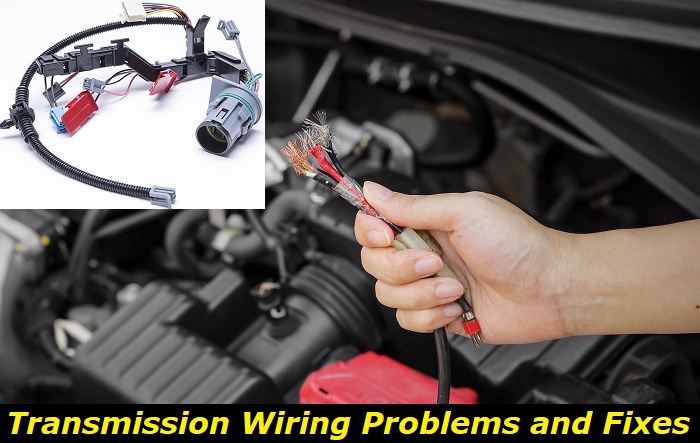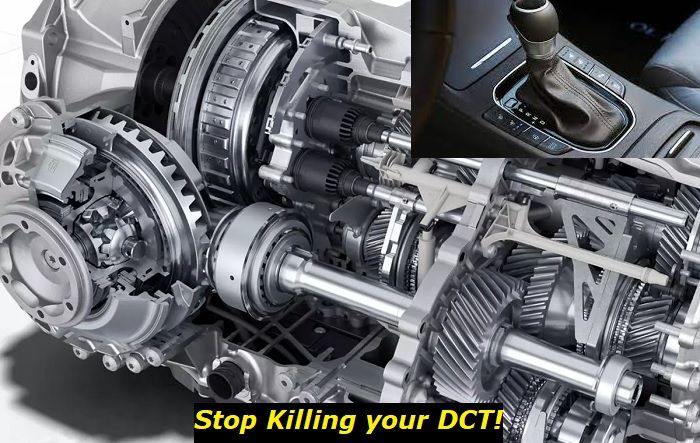In general, a car's transmission wiring harness bridges the engine and the fuse box. Its wires can branch out to the other electrical and mechanical components from there, and some of them cycle back to the engine to complete the circuit. With that, if this part malfunctions, it will likewise trigger various electrical and mechanical problems in your car.
Transmission wiring problems highlights
- Level of importance:High
- Reasons:Wiring disconnected, corrosion damage
- Needed expertise:High
- Needed tools:Professional tools set
- Time taken:2-10 hours
- Can you drive? Only in limp mode
- Possible issues: Dead transmission, no shifting, no reactions, glitchy reactions.

How the Transmission Wiring Harness Works
The transmission wiring harness is mainly responsible for carrying electrical signals between the components of the transmission system. This includes the engine control unit, the transmission control unit, and the different sensors and actuators located throughout the transmission. The transmission wiring harness is a critical part of the overall vehicle electrical system and helps to ensure that the transmission system operates correctly.
The transmission wiring harness typically consists of a series of wires and connectors that are routed between the various components of the transmission system. It may also include other elements such as relays or fuses. The specific design of the transmission wiring harness will vary depending on the generation, make, and model of the vehicle.
Key Symptoms of Problems in the Transmission Wiring Harness
If the transmission wiring harness is damaged or malfunctioning, it can cause a variety of problems with the transmission system. This can include everything from shifting problems to complete failure of the transmission. Sometimes, a damaged or malfunctioning transmission wiring harness may also cause other problems with the vehicle, such as engine misfires, stalling, rough starts, warning lights in the dashboard, and a plethora of electrical troubles.
Repairing or replacing a damaged or malfunctioning transmission wiring harness is a relatively straightforward process with the right skill set and tools. It is typically a job done by most DIY (do-it-yourself) people. However, in some cases, it may be necessary to have the work done by a professional because of the sensitive parts that you may come across before getting access to the transmission harness.
More Specific Causes, Symptoms, and Solutions to the Common Problems Found in the Transmission Wiring Harness
Like all other parts of the car, numerous problems can be traced back to the transmission wiring harness. Similarly, there are parts of the vehicle that may directly or indirectly interfere with the function of this component.
However, if we focus only on the most common issues associated with the transmission wiring harness, here are the things that will likely trouble you within this specific component of your auto:
1. Open Circuit
An open circuit is a break in the electrical path usually caused by a physical separation in the wiring. This can create an electrical shortage or loss of power. Moreover, it can bring damage to the vehicle's electrical system if ignored.
An open circuit in the transmission wiring harness can be due to several factors. The most common reason is a break in the wire, which can be caused by physical damage (such as a pinched wire), tension, or corrosion. Other factors leading to the break in the wiring may be due to electrical surges triggered by loose connections, faulty connectors, and blown fuses. So, before anything else, isolate the possible cause of the problem first to prevent misdiagnosis and unnecessary repairs.
To diagnose an open circuit, start by inspecting the wiring harness for any severed wiring connection. Other noticeable damages such as burn marks or fraying will likely lead you to the line where the broken connection is located, too.
If you are having trouble finding the visual indicators of the damage, then use a multimeter to check for continuity between the two ends of the line in question. If there is no continuity, then there may be breaks along the length of the wire. In this case, the wire or harness may have to be replaced.
2. Stretched Wiring
Another common issue found in the transmission wiring harness is stretched wires. The overextension of the wires can happen when there is too much tension on the harness or it was improperly installed during the vehicle's assembly in the factory or after servicing.
This issue can contribute to misfires, as well as plenty of shifting and starting problems. If you notice that your car is having trouble shifting gears, or if it's taking longer than usual for the engine to turn over when you start the car, it's likely that you have a stretched wire. These can also trigger all sorts of electrical fluctuations.
To diagnose the issue, start by going over the wiring harness for any obvious signs of extra tension in its lines. If you see any, have the lines adjusted. They may have to be replaced right away, however, if they are already beginning to break.
If you think that the harness is still functioning well, you can confirm the quality of the wires through a multimeter. If there's continuity, they are still in good condition, and all you may need to do is have the layout of the wiring fixed.
3. Corroded Wires
Corrosion is a fairly common issue with transmission wiring harnesses as they age. This can happen, too, when the vehicle is regularly exposed to moisture either from the environment or from leaks in the system. Similar to the other factors here, corrosion can cause all sorts of problems including shorting, loss of power, damage to the vehicle's electrical system, performance issues, and even fire.
To diagnose corrosion issues, start by looking into the harness for any obvious damage such as the build-up of greenish or white residues in the wires. You can also trace the contamination by checking each wire for resistance with a multimeter. The one with infinite reading or a value above zero is a good way to start your search.
Corrosion can be fixed by simply cleaning the contaminated part. One way to do this is by using a wire brush partnered with a solution of baking soda and water. Just make sure to apply the solution liberally, then rinse it off with clean water afterward. Let the area dry completely before moving on. As always, the harness has to be replaced if it's already damaged.
4. Faulty Connectors
Faulty connectors are issues common with transmission wiring harnesses as well. This can happen when the connectors become loose or damaged, or when they have become corroded.
To diagnose the problem, start by checking for loose connectors. Ensure that all of them are fully seated in their corresponding ports. If they are not, then gently wiggle them to see if they make a connection. If they don't, then try reseating them.
Visually inspect their attachments for signs of damage, too, like scorch marks, melted plastic, or tattered wires. These can be repaired if the damage is only minor but if it's already severe, the only way around it is to replace the problematic part or the whole harness.
If you are having difficulty in looking for the culprit, yet you suspect that the problem is originating in one of the connectors, check each of them for continuity with a multimeter. If there is no continuity, then the connector is most likely faulty and will need to be replaced.
5. Damaged Insulation
When it comes to electrical systems in vehicles, insulation is the key to guaranteeing their proper function. A damaged or compromised insulation can cause all sorts of electrical issues.
The possible symptoms of insulation damage include strange noises coming from the electrical system, dimming or flickering lights, and intermittent power issues. To diagnose the problem, a technician will first check the affected wiring harness for signs of damage. If any is found, they'll have to confirm their diagnosis by testing the wires with a multimeter.
Once the source of the problem has been identified, it can be repaired or replaced as needed. In some cases, simply re-insulating the affected wires may be all that's needed to fix the issue. In a worst-case scenario setting, the harness may need to be changed.
6. Wire Touching the Ground
Lastly, when an electrical circuit is not functioning properly, it may be due to a wire touching the ground. This can cause different electrical issues in a vehicle and may result in symptoms like dimming or flickering lights, engine stalling or hesitating, static in the radio, or starting problems.
Normally, the problem can be fixed by fixing or adjusting the orientation of the wire and/or the ground. In some instances wherein one or both parts have been badly damaged, the faulty part will have to be replaced.
Conclusion
A problem originating from the transmission wiring harness can be tricky to diagnose most of the time. As this part is both electrical in nature and is also responsible for managing the transmission, the symptoms of its issues may mask itself in many ways. In addition, there are other components that may influence its basic function.
To be safe, just bring your auto to your mechanic right away if you notice one or more of the red flags discussed in this article in order to effectively zero in on the problem whether it is really coming from the transmission wiring harness or somewhere else to save yourself from all the hassle.
About the authors
The CarAraC research team is composed of seasoned auto mechanics and automotive industry professionals, including individuals with advanced degrees and certifications in their field. Our team members boast prestigious credentials, reflecting their extensive knowledge and skills. These qualifications include: IMI: Institute of the Motor Industry, ASE-Certified Master Automobile Technicians; Coventry University, Graduate of MA in Automotive Journalism; Politecnico di Torino, Italy, MS Automotive Engineering; Ss. Cyril and Methodius University in Skopje, Mechanical University in Skopje; TOC Automotive College; DHA Suffa University, Department of Mechanical Engineering






Add comment